There wasn’t any good reason for this boot mod, other than I had some boots languishing on the shelf and some spare time, plus, I like Telemark skiing, and why not try to make my ancient tele boots better? Trolling the internet, Googling ideas that pop into my head, usually yields nothing much, but a sharp eye caught a strange-looking telemark boot in a review of the Voile TTS binding. A few clicks later, and I stumbled across the @the_telemark_undead Instagram page.
The plethora of silly boot mods, all brought about by the abandonment of the Tele turn by the ski industry, has created a beautiful and ridiculous subculture of knee-dropping heathens, mad maxing their way to the ideal (in their minds) version of the tele boot.
As a gear dork, fan of weird projects, and curious about ski boot design and function, I couldn’t resist trying my hand at a light(er) Frankenstein tele-boot.
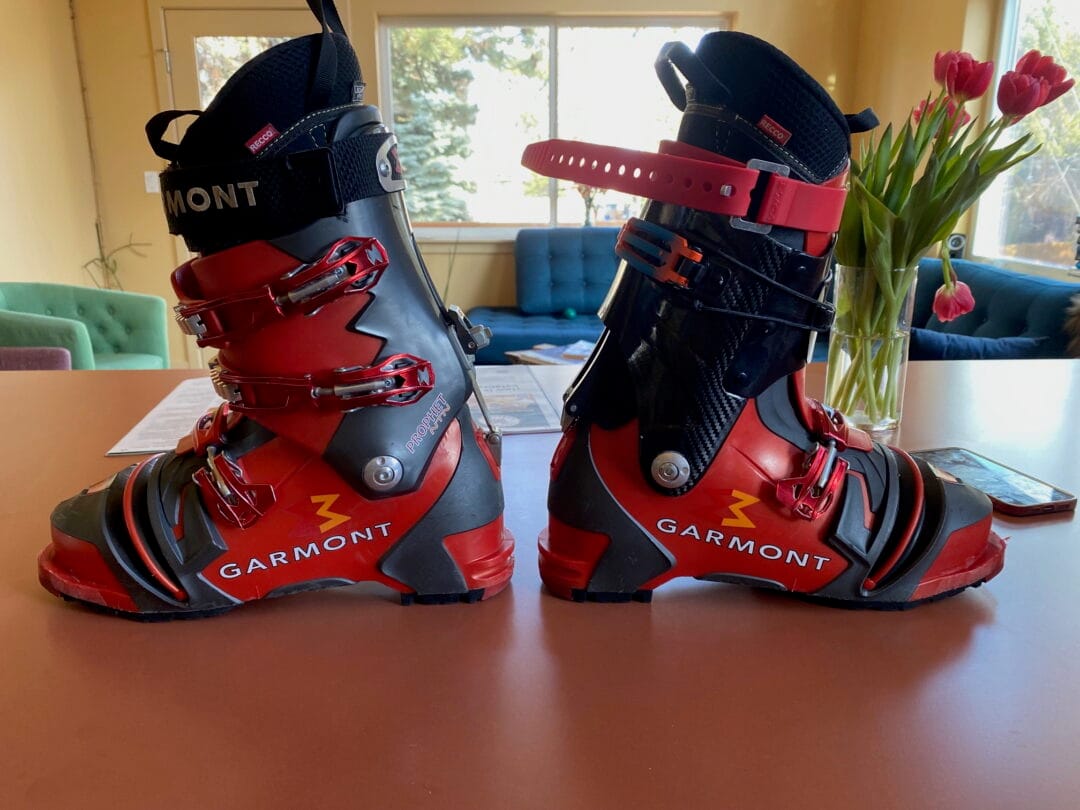
The marriage would go as such: One pair of lightly used but somehow totally clapped-out Dynafit DNA race boots that I never liked but couldn’t sell, and my coveted, but uncomfortable and weighty Garmont Prophet NTN tele boots.
Visually, there was hope. I could roughly see that all the various parts I would be melding lined up reasonably well, so deconstruction began.
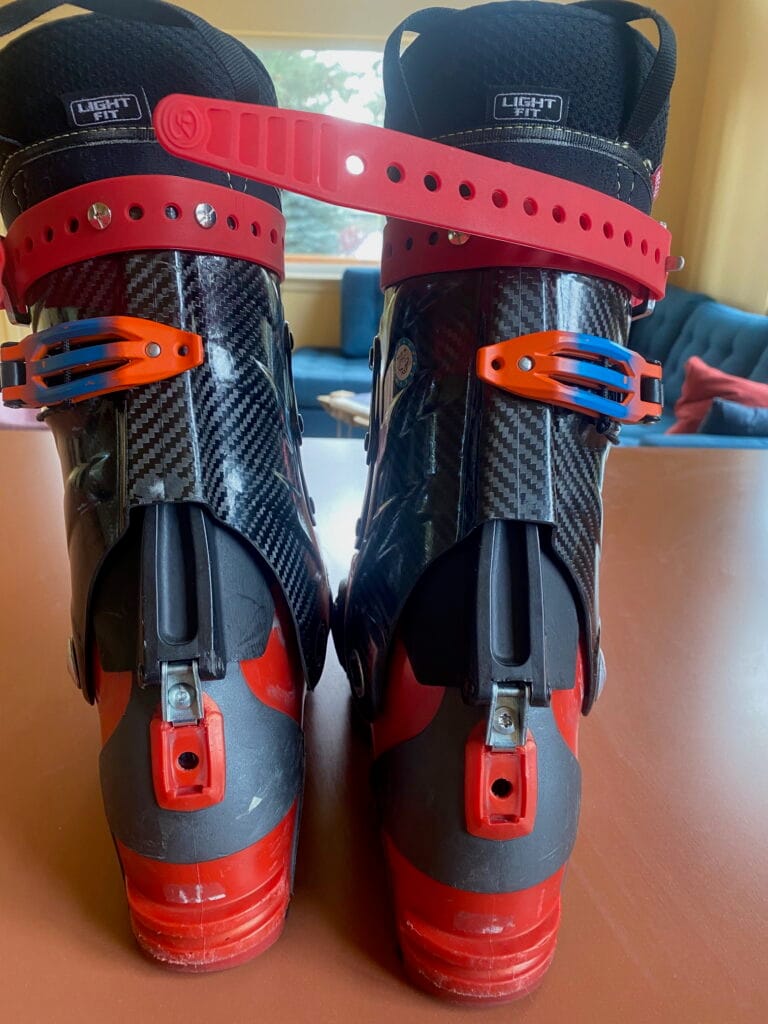
Drilling out cuff rivets is harrowing, but I persevered, and soon I had eight boot pieces where there were once four.
Removing the “Speed Lock” rear tongue on the DNA boots was probably the most difficult part of the operation, but with some aggressive persuasion with a hammer and punch, I had the critical cuff locking part available.
Some more fiddling showed me that I needed to relocate the mounting bracket for the ski/walk mechanism a bit higher on the tele boot scaffo, so I queued the music, wrangled the dremel, and a few songs later had everything basically sorted.
The final piece of the puzzle was the cuff pivots, but since I could salvage the outer Canting pivots from the original cuffs, I only had to build inner cuff pivots.
Back to the Google machine and a post from Lou Dawson highlighting a cuff pivot fix using bike chainring bolts, and voila, I was in business. I still had the original plastic cuff pivot bushings from the DNA boots, and it all went together much easier than I thought.
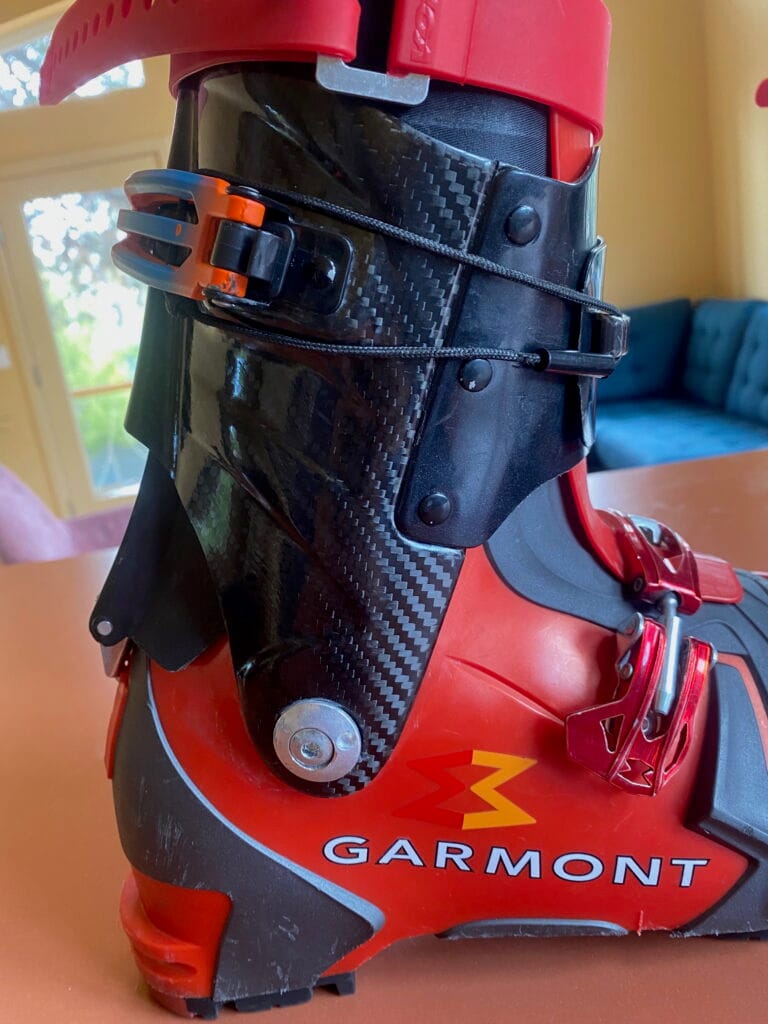
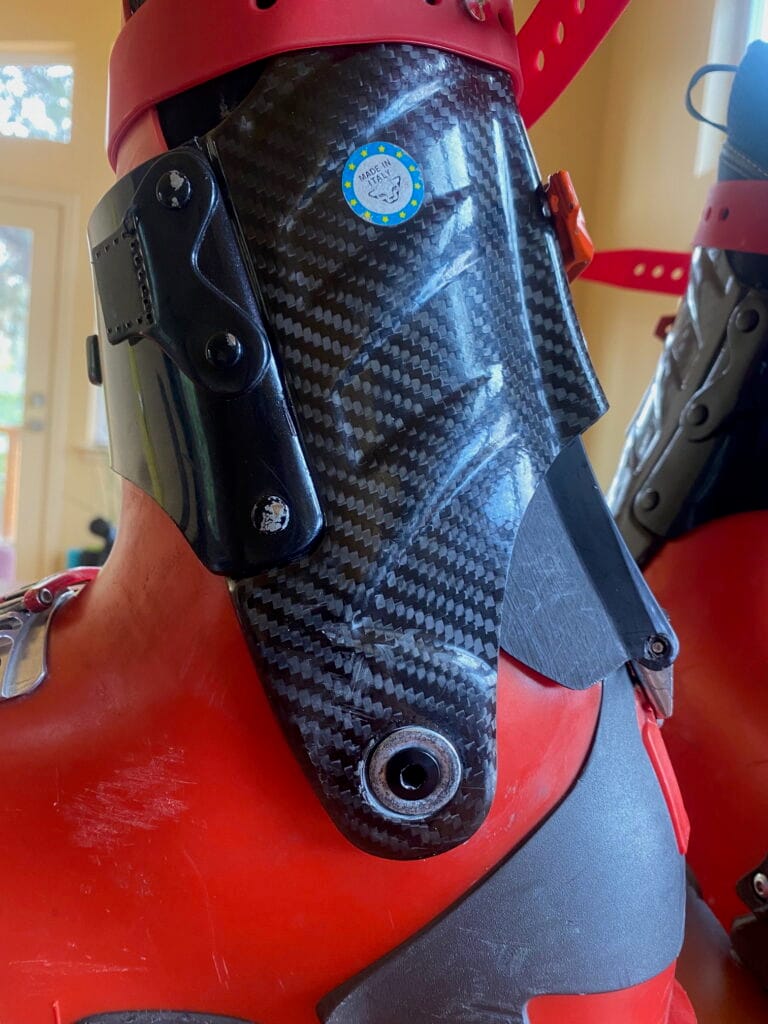
Initial carpet testing led me to add the thicker Voile power strap to slightly increase the forward resistance, but that was easier than I thought.
A quick trip upstairs to snag the baking scale, and I discovered I had knocked 369 grams off the Prophet platform, and at the same time ended up with a Tele boot that feels much rounder in its flex profile. The original boots were 2064 grams, and were now reduced to 1695 grams. I could probably cut more weight with some aggressive plastic cutting and buckle swaps, but I’m stopping the mods for now.
So, all in all, this was an interesting boot-exploration process and an increase in my understanding of how ski boots piece together and function. Was it worth all the faffing? Probably. I now have a lighter telemark boot that works better. And I have some nerdy stuff to discuss with people interested in this sort of thing. Further, learning how the myriad boot pieces piece and play together and how simple (in this case) it is to modify boots was a great learning experience. Now I’d better go LocTITE all these fittings so my boots don’t fall apart halfway up or down a mountain.
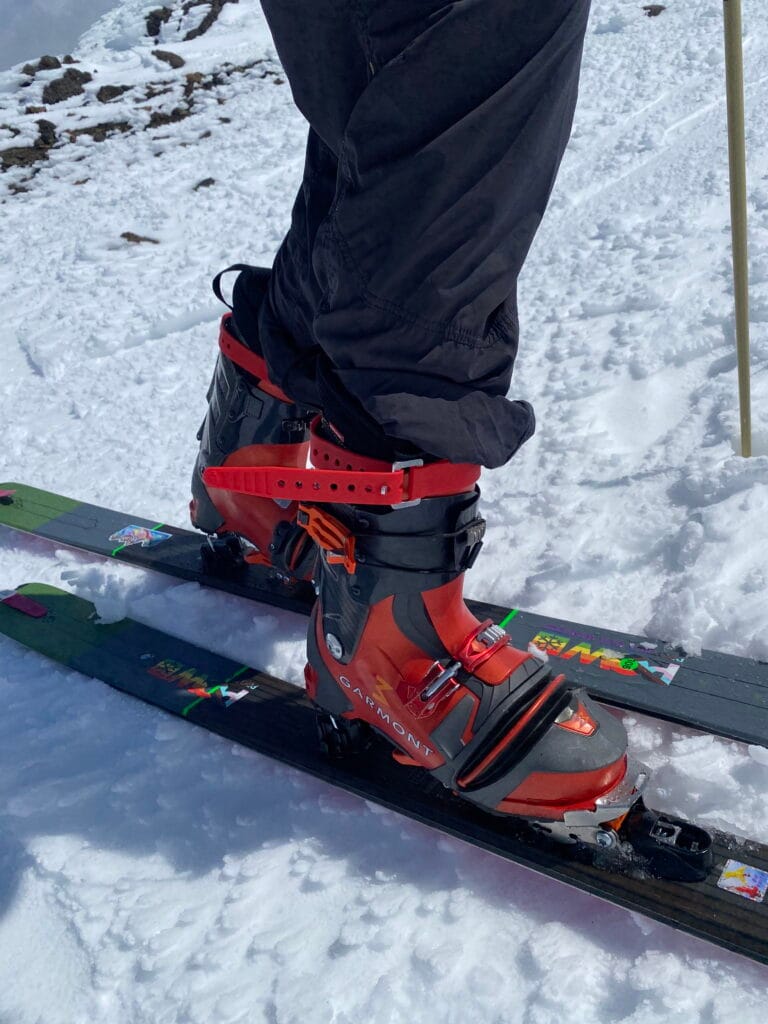
Post-Mod Notes
Things I am into:
The increased range of motion and decrease in weight are great. The boots feel noticeably lighter and easier to skin on. This dynamic stems from a drop in weight and better cuff mobility, which increases free stride length and gives more lateral flex, making sidehilling easier.
Things I am still figuring out:
The Stiffer Carbon cuff prompts a more immediate and direct engagement of the boot bellows. This makes sense, as a stiffer cuff will leverage the boot into the bellows more quickly. However, my first few turns felt a bit off while adjusting to the different sensation. Once I got used to it, the stiffer cuff made dropping into the tele turn easier, as instantaneous engagement of the bellows smoothed out my turns. It all felt flowy once I figured out how to adjust my technique to the new feel. However, now I am contemplating getting the “stiffy” springs for my 22 Designs Outlaws to help give a little extra power through the turn. As the adage goes, adding stiffness in one place will expose or transfer weaknesses to other places. I did undo the Voile “power staps” halfway down my volcano descent—I think I can safely remove them without consequence, knocking another 100 grams of the total package, so that is sweet.
So, I am pretty stoked about how the experiment is going thus far. Now, I am looking for some more Volcano skiing and figuring out how to put some tech toe mounts in these boots so it can all get really weird.
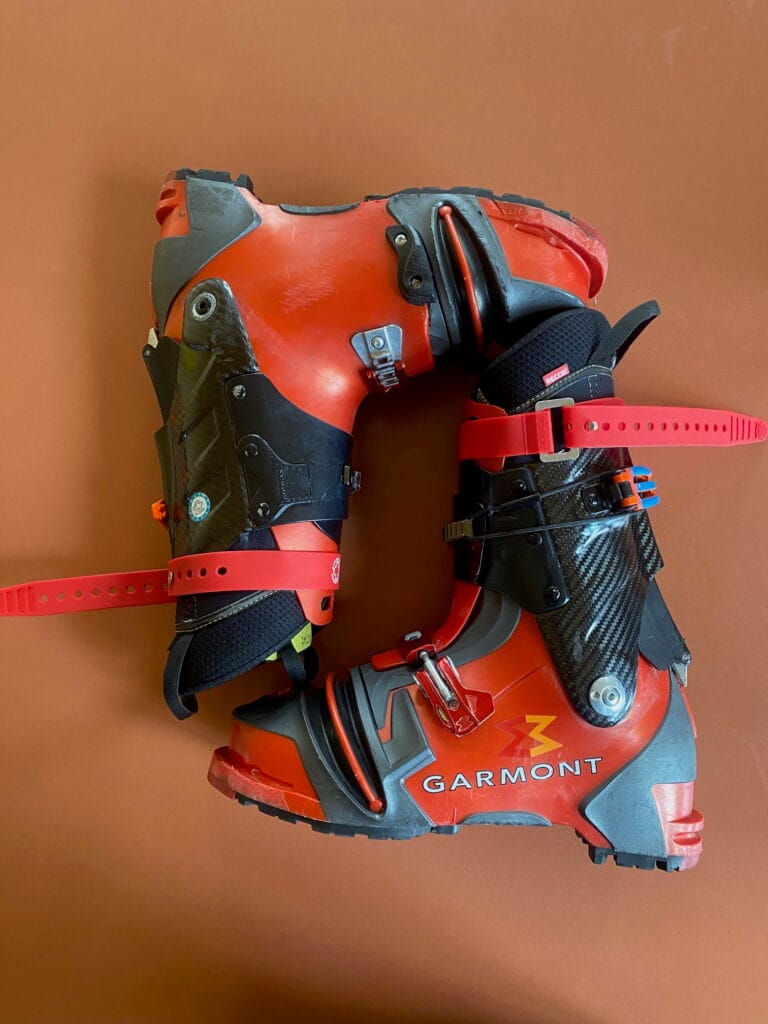

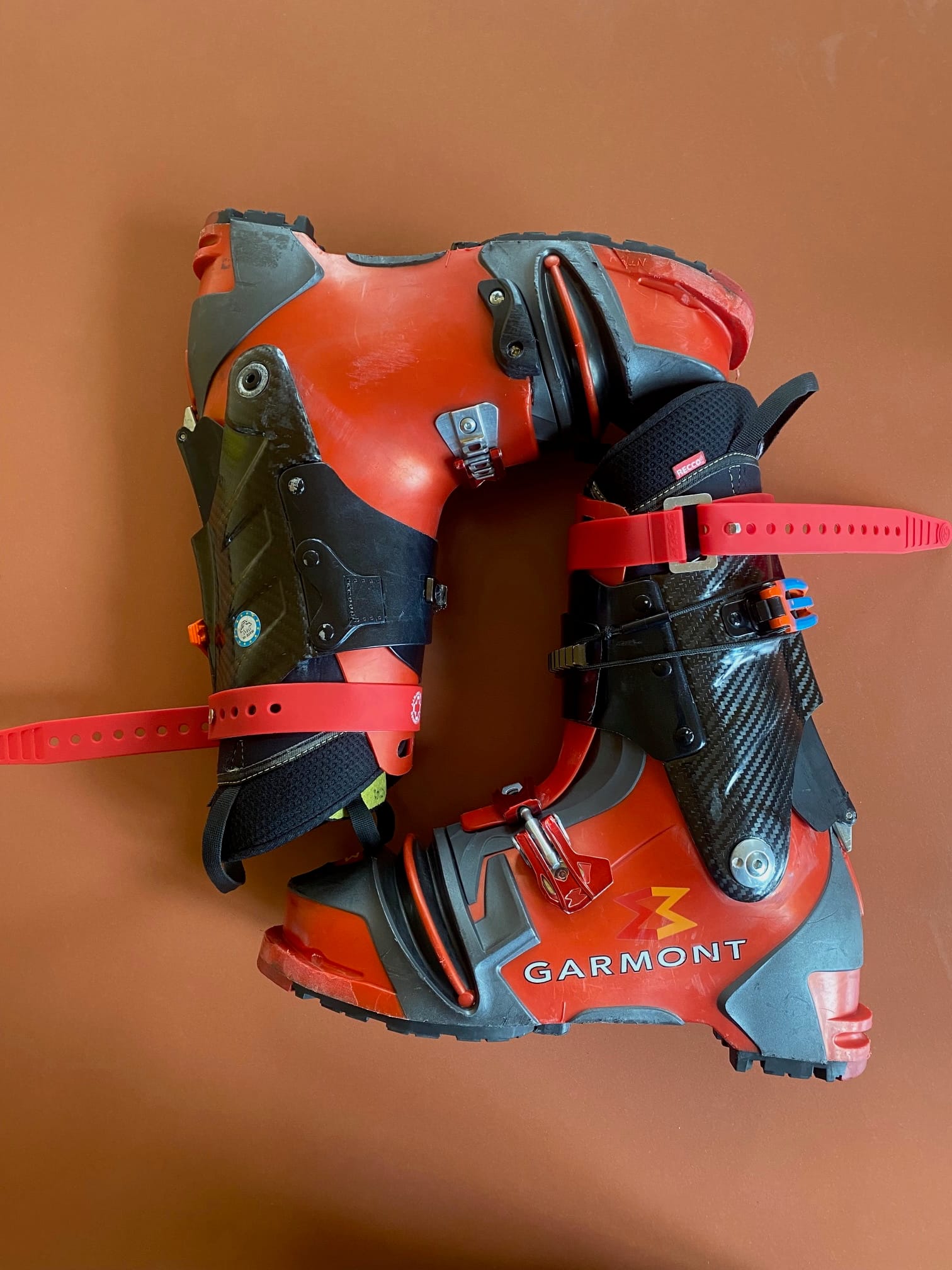



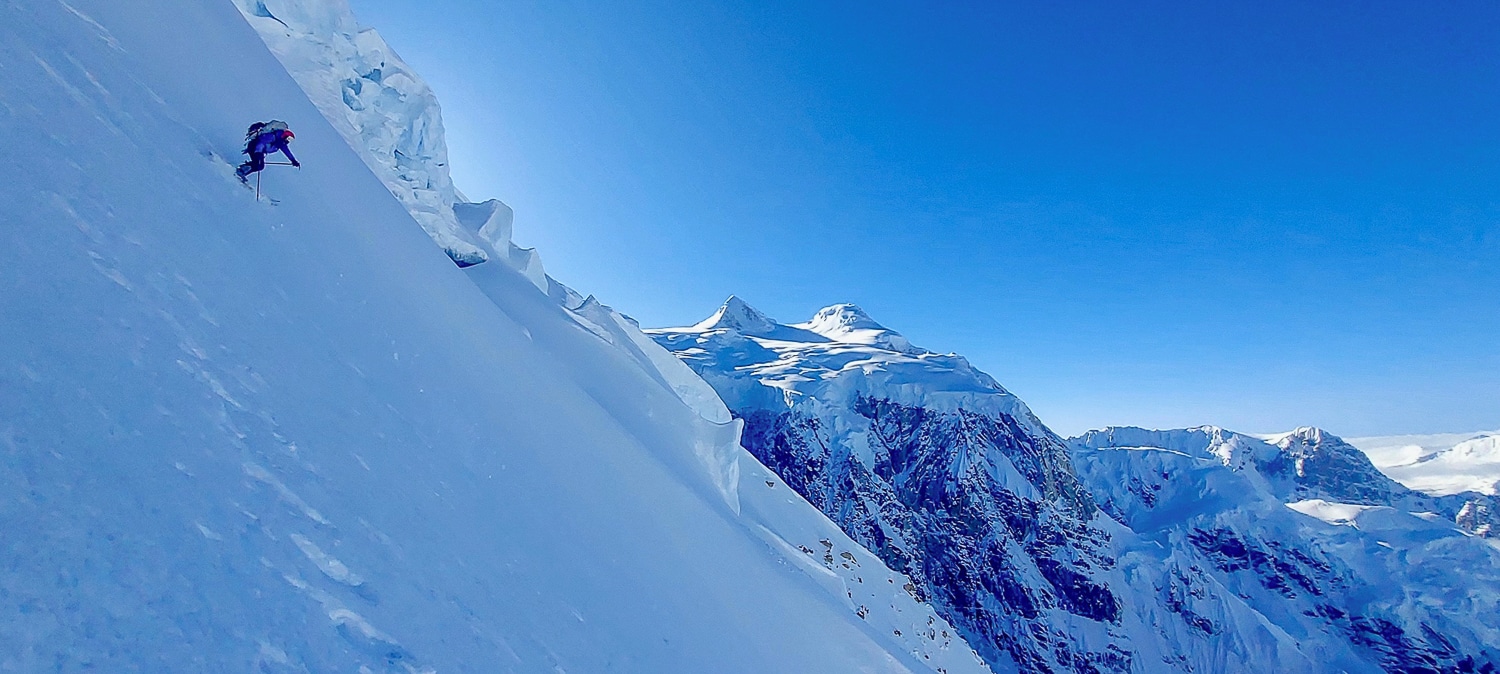
Leave a Reply
You must be logged in to post a comment.